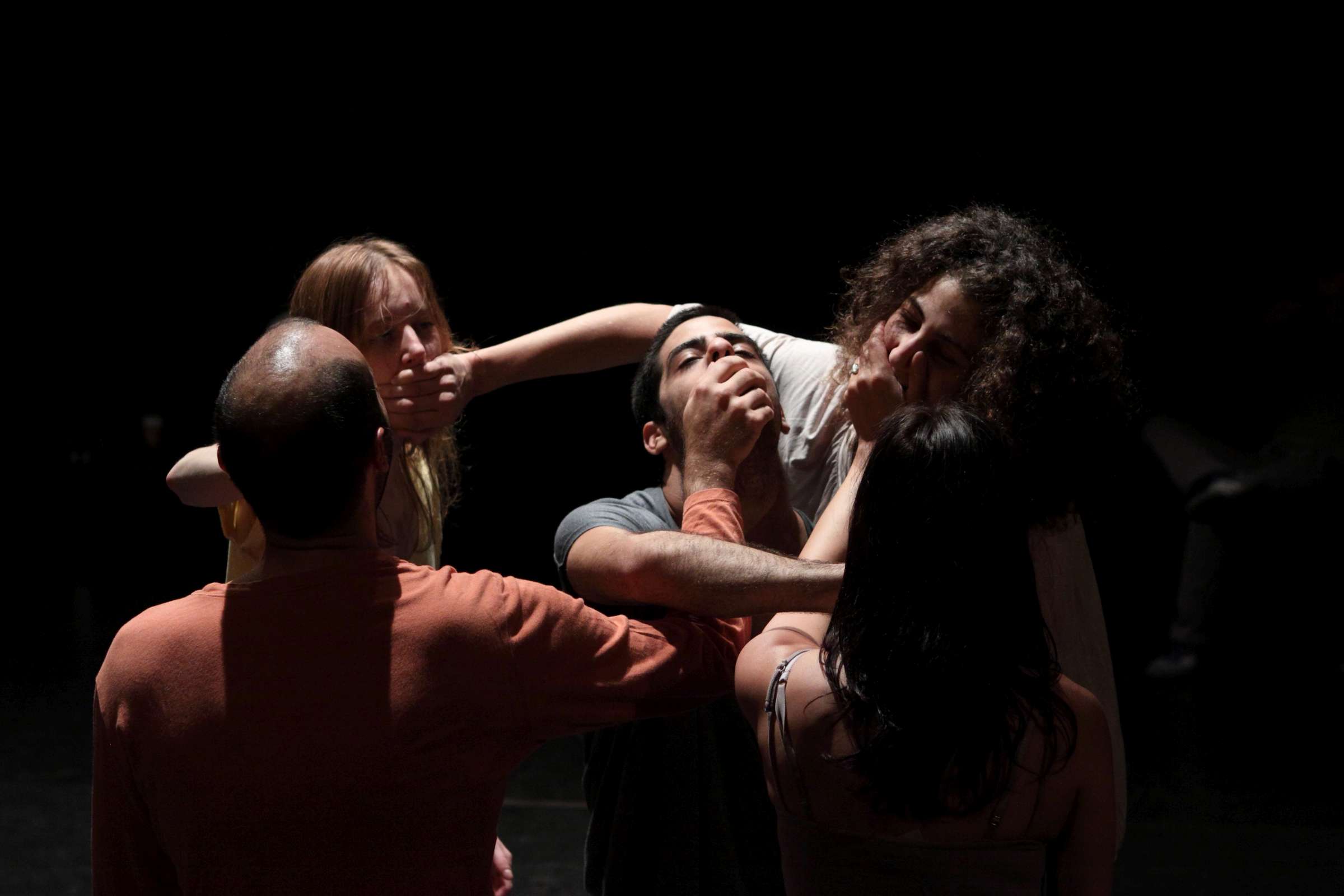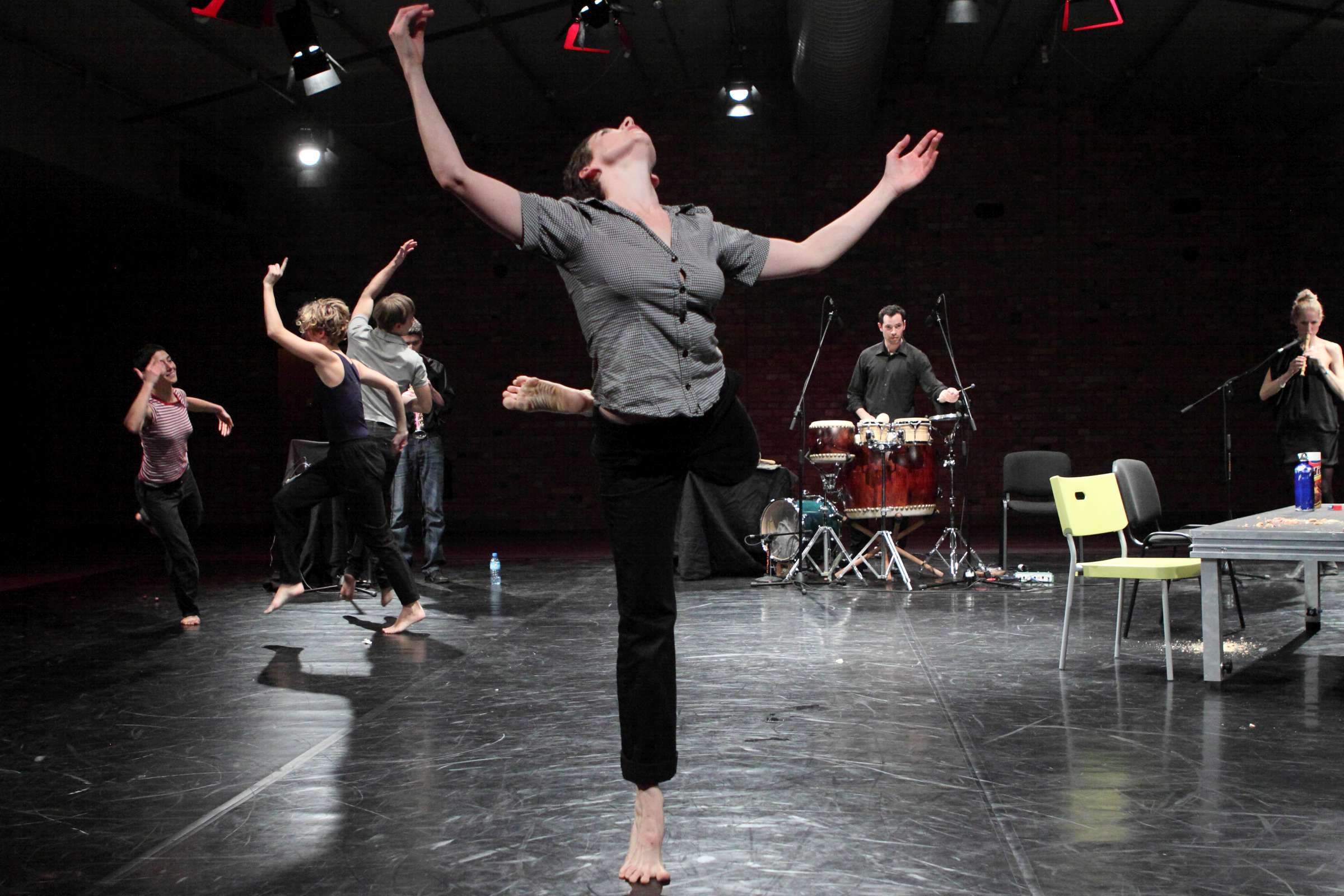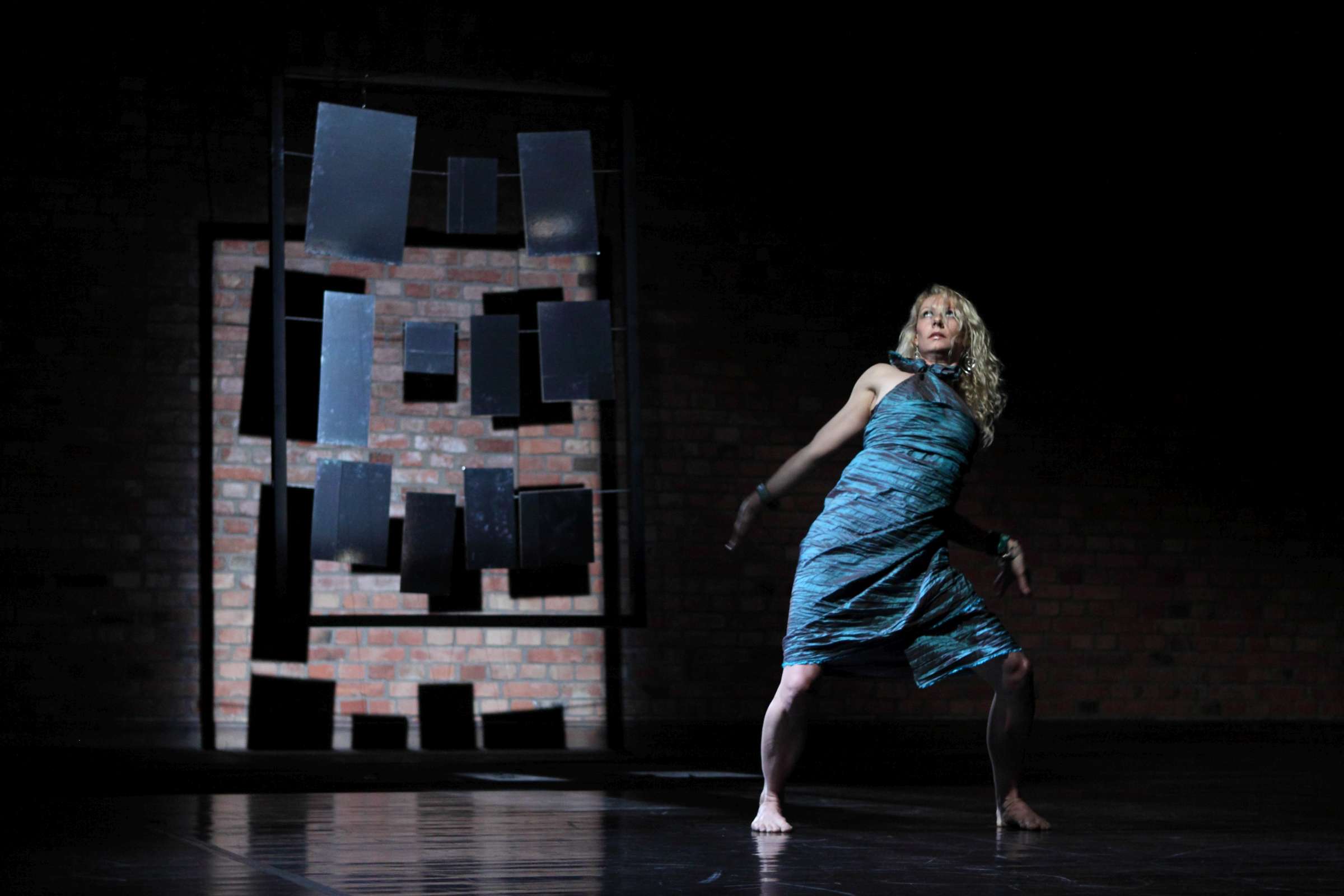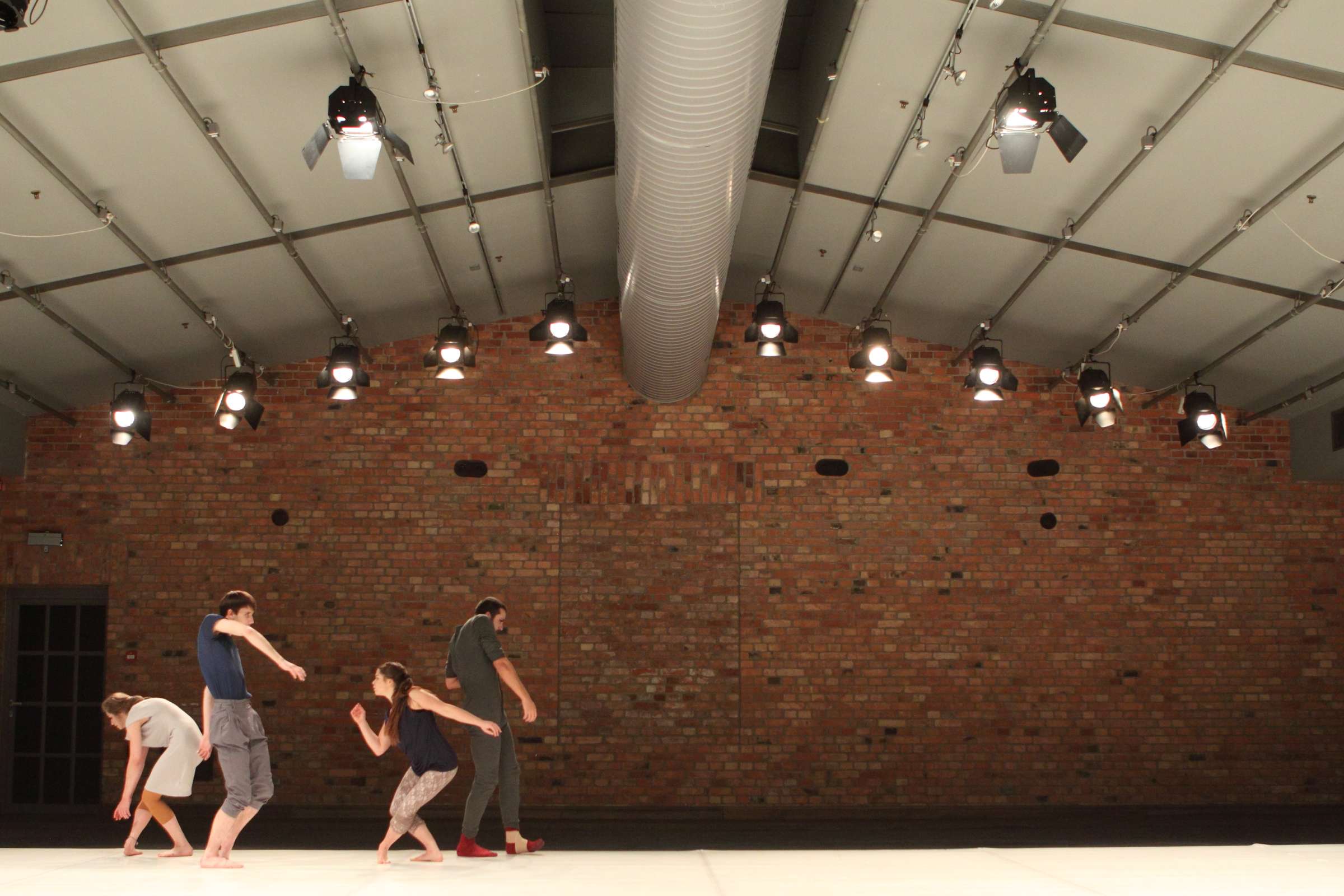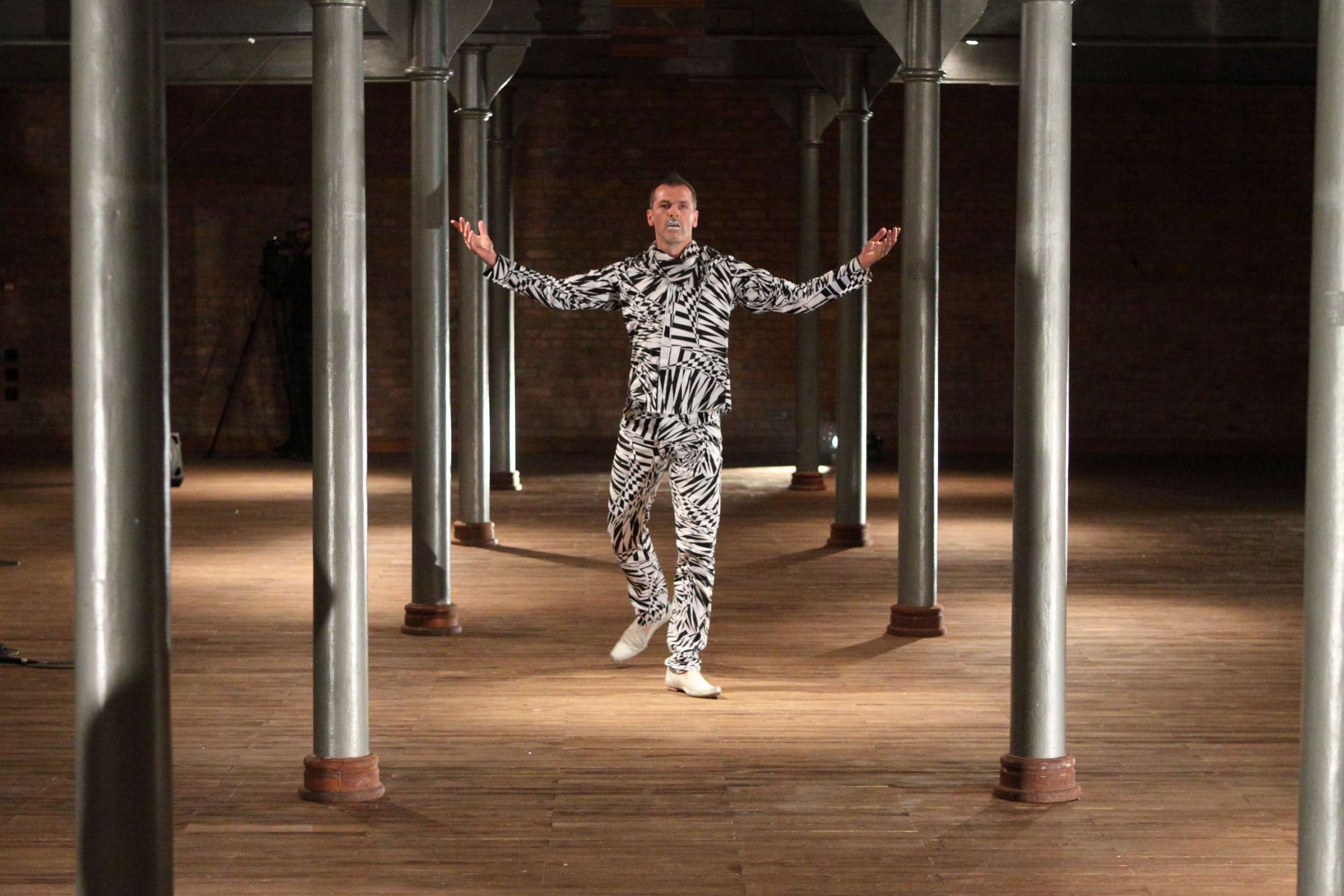The Old Music New Dance project, joining contemporary dancers and artists performing early music, offers a thorough analysis of theoretical underpinnings of Baroque music (its extraordinary wealth of forms and exquisite art of composition) and of Baroque as such. Its objective is to define their essence and reflect it in choreography.
The principal events of the Old Music New Dance programme were premiere performances directed by three female choreographers: Lii Haraki from Cyprus (4,5.11), Małgorzata Haduch from Poland (18,19.11) and Kirstine Andersen from Denmark (25,26.11).
Launching the project on 4.11 Lia Haraki (Cyprus) was studying the Baroque doctrine of affects, and posed questions about an honest presence on the stage as opposed to theatre representation. The exploration and repetition of everyday gestures helps experience affects via physical motion and facilitates evoking emotions and feelings via the simplest actions. While Lia Haraki decided to work with the most organic instrument of human voice, the other two artists, Małgorzata Haduch (Poland) and Kirstine Andersen (Denmark), chose as their starting point the dialogue of pure movement and Baroque compositions. Their performances were created in close cooperation with world-renowned performers of early music within improvised sessions taking place over a period of a few weeks in three European countries. It is improvisation, which as a performing strategy is not that easily associated with Baroque but which is still present in it, that proved the most powerful link joining musicians and dancers today. Moreover, improvisation was also the basic tool of explorations and compositions of both performances.
A clash of improvisation techniques with early music was observable also during events that accompanied the world premieres of the performances: an improvised meeting of a renowned Danish trio Alpha with an international group of improvising dancers (Blind Date 06.11), as well as during the last evening (27.11), when one of the most eminent US dancers, Keith Henessy, invited for an improvisation to the accompaniment of electronic music inspired by Baroque compositions whereas Jurij Konjar from Slovenia took on J.S. Bach’s masterpiece of Baroque music, Goldberg Variations.
The project was concluded by an intense scholarly session prepared by dance critic Jadwiga Majewska which provided context for the performances and for summarising the effects of the entire program, i.e. debates with the participating artists. The lectures addressed characteristics of Baroque aesthetics and theory and analysed their impact on art and other areas of social life, politics included.
